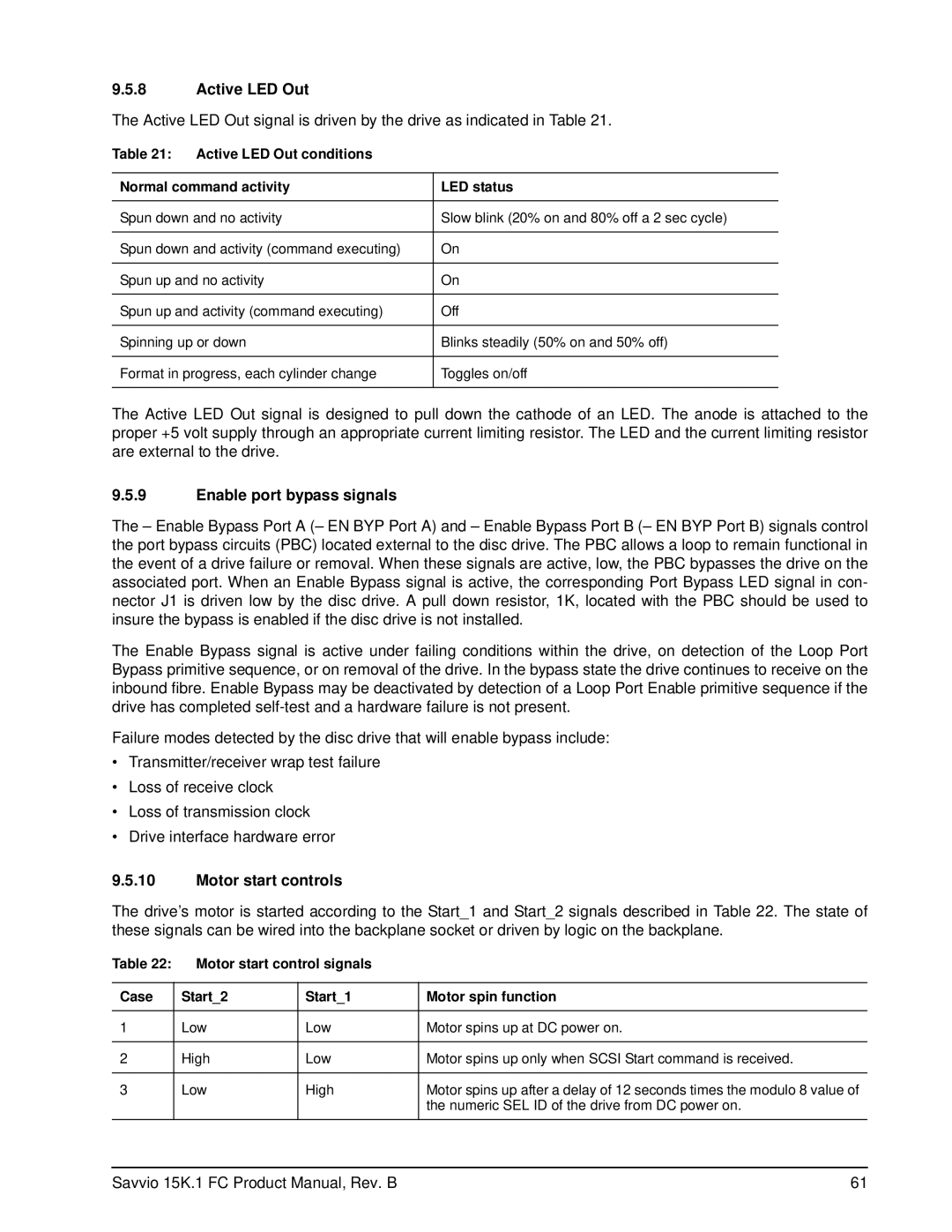9.5.8Active LED Out
The Active LED Out signal is driven by the drive as indicated in Table 21.
Table 21: Active LED Out conditions
Normal command activity | LED status |
|
|
Spun down and no activity | Slow blink (20% on and 80% off a 2 sec cycle) |
|
|
Spun down and activity (command executing) | On |
|
|
Spun up and no activity | On |
|
|
Spun up and activity (command executing) | Off |
|
|
Spinning up or down | Blinks steadily (50% on and 50% off) |
|
|
Format in progress, each cylinder change | Toggles on/off |
|
|
The Active LED Out signal is designed to pull down the cathode of an LED. The anode is attached to the proper +5 volt supply through an appropriate current limiting resistor. The LED and the current limiting resistor are external to the drive.
9.5.9Enable port bypass signals
The – Enable Bypass Port A (– EN BYP Port A) and – Enable Bypass Port B (– EN BYP Port B) signals control the port bypass circuits (PBC) located external to the disc drive. The PBC allows a loop to remain functional in the event of a drive failure or removal. When these signals are active, low, the PBC bypasses the drive on the associated port. When an Enable Bypass signal is active, the corresponding Port Bypass LED signal in con- nector J1 is driven low by the disc drive. A pull down resistor, 1K, located with the PBC should be used to insure the bypass is enabled if the disc drive is not installed.
The Enable Bypass signal is active under failing conditions within the drive, on detection of the Loop Port Bypass primitive sequence, or on removal of the drive. In the bypass state the drive continues to receive on the inbound fibre. Enable Bypass may be deactivated by detection of a Loop Port Enable primitive sequence if the drive has completed
Failure modes detected by the disc drive that will enable bypass include:
•Transmitter/receiver wrap test failure
•Loss of receive clock
•Loss of transmission clock
•Drive interface hardware error
9.5.10Motor start controls
The drive’s motor is started according to the Start_1 and Start_2 signals described in Table 22. The state of these signals can be wired into the backplane socket or driven by logic on the backplane.
Table 22: | Motor start control signals |
| |
|
|
|
|
Case | Start_2 | Start_1 | Motor spin function |
|
|
|
|
1 | Low | Low | Motor spins up at DC power on. |
|
|
|
|
2 | High | Low | Motor spins up only when SCSI Start command is received. |
|
|
|
|
3 | Low | High | Motor spins up after a delay of 12 seconds times the modulo 8 value of |
|
|
| the numeric SEL ID of the drive from DC power on. |
|
|
|
|
Savvio 15K.1 FC Product Manual, Rev. B | 61 |
